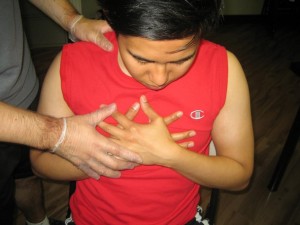Contrary to popular belief, hyperventilation is not just simply an extreme emotional response to stimuli may it be internal, environmental or even social. It can also be a symptom of a fatal disease which can cause death if left untreated for the first several minutes. This is why it is important to take a first aid training class which can teach students how to differentiate cases of hyperventilation based on its actual severity and how it can be properly managed until an actual healthcare professional can administer further medical care. Here are some of the topics that will be covered in a first aid training class.
Complications of hyperventilation

Even though acute hyperventilation rarely turns into chronic hyperventilation, it can still cause other complications which can cause extreme discomfort or even fatality. One of these complications include hypercapnia which is mainly caused by high amounts of carbon dioxide in the blood which is very likely for people whose respiratory rate is higher than normal. Hypercapnia can become lethal when left untreated since it can cause pulmonary edema which can inhibit the distribution of oxygen to the vital organs which include the heart and the brain. Cases of sudden or uncontrollable hyperventilation can also cause mental distress which can influence the patient to behave erratically.
Important details regarding hyperventilation
The success of the treatment for the complications of hyperventilation such as hypercapnia greatly depends on its underlying cause since hypercapnia itself is hard to treat without knowing the medical condition which triggers it. This is why other rescuers who are not directly administering care to the patient should ask around and see if someone can give vital information regarding the cause of the hyperventilation episode. Instead of focusing on the why, rescuers should focus on the what. They should determine what the patient was doing prior to the attack or if a stimuli which can trigger the response is present. When asking questions to patients, rescuers should instruct patients to use other means of communication aside from speaking such as sign language.
Aside from the right questions that should be asked, students in a first aid class will also be taught how to promote proper breathing through non-pharmacological means which include proper positioning, performing crowd control and moving the patient to a more well-ventilated room. They will also be taught how to interact with distressed patients in order to make sure that they acquire vital information which will be relayed to healthcare professionals for faster and more efficient treatment.
